Graphics Concepts
Components of a Basic Graphics System

The Power of the GPU
- AMD Threadripper 3990X - 64 cores ($3,990.00 MSRP)
- Nvidia RTX 3090 - 10,496 cores ($1,499.00 MSRP)
While the CPU has higher per core clock speeds, the GPU can do TONS of calculations in parallel.
(This is why crypto miners love them!)
Getting an Image to the Screen
- CPU gets the specifications for a geometric shape from an application
- The CPU hands the geometric data (and possibly additional operations) to the GPU
- The GPU rasterizes the data by converting by deciding which pixels to use to represent the data
- The GPU places the pixel data into the framebuffer to show on the display screen
Rasterization
Credit: Lea Rosema
Framebuffer
Comprised of multiple buffers for both pixel locations and pixel colors
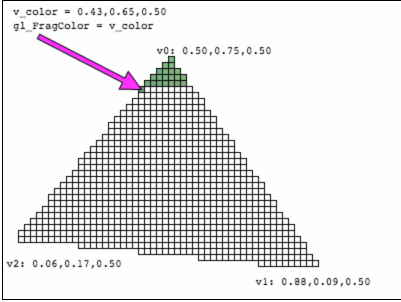
Image Formation
Conceptually mimics phyical imaging systems
- Cameras
- Microscopes/Telescopes
- Human Eye
Elements of Image Formation
- objects- subjects in a scene
- viewer- observes the object and forms the image
- light sources(s)- reacts with object and its material properties
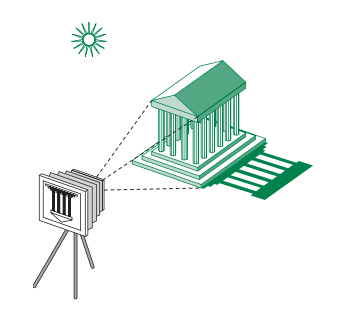
Objects
- objects we create with computer graphics are synthetic (artificial)
- vertices, a set of locations in space, form the basis for geometric primatives
- points
- lines
- polygons
Viewers
Form the object by provideing context to the scene
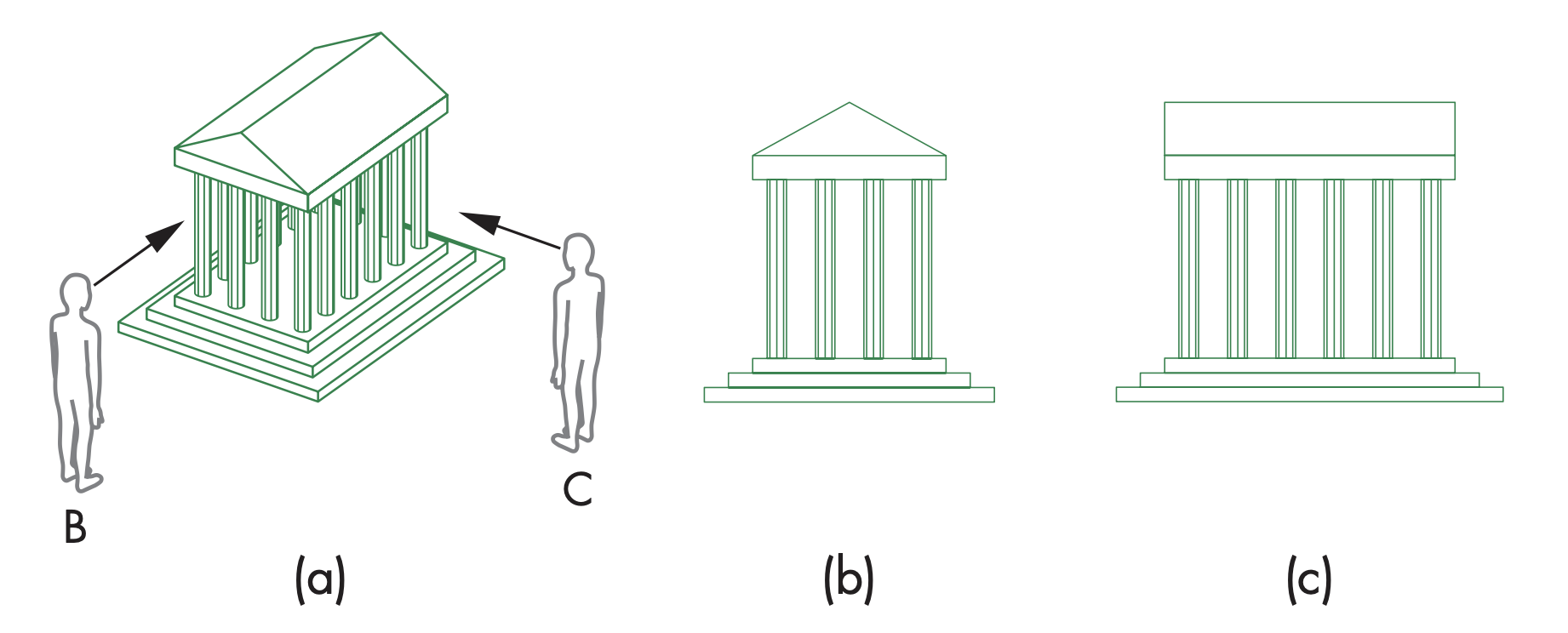
Light
- Physical light sources emit light in a variety of ways
- Approximated with
geometric optics models - A ray is semi-inifinte and travels from the point source out straight outward
- point source emits light equally in all directions
Ray Tracing (Physical)
- No light, can't see anything
- Only concerned with what enters the camera
- Tracing the path of the light rays
- Material Types:
- Reflective
- Diffuse
- Translucent
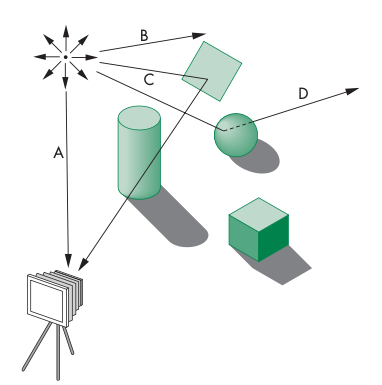
Luminance Image
- Monchromatic
- Levels of Grey (Black -> White)
Color Image
- Hue - Name of the color (red, green, etc.)
- Saturation - how much of the color is present (Black -> color)
- Lightness - the brightness of the color (White -> color)
- We don't need to match every possible color...why?
Three Color Theory
- Rods: monochromatic, night vision
- Cones: Three types of cones
- three (tristimulus) values sent to brain
- Only need to match three primary colors
- Red, Green, Blue
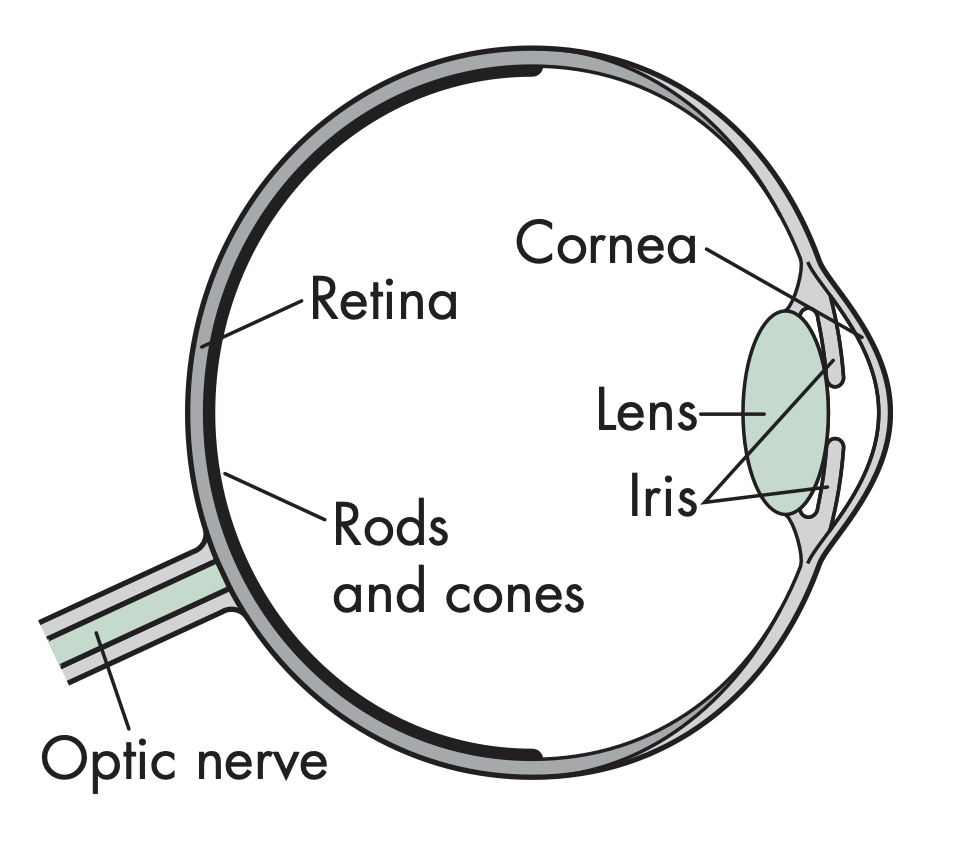
RGB Color Model
- Additive Color
- Mixes Red, Green, and Blue to make colors
- Common in digital displays
CMY Color Model
- Subtractive Color
- Filter white light with Cyan, Magenta, Yellow, and Black
- Common in print media
- Often refered to as CMYK
- K is known as key and is a separate color for black
The Human Camera
- Cornea protects the lens
- Corenea and lens help focuses light on the retina
- Iris determines how much light to let in
- Retina is the surface on which an image is projected

Modeling a Camera
Pinhole Camera

- A light ray from (x,y,z) enters the center of our camera lens
- Hits the camera at a projection of the original point
- The intersection forms two similar triangles
What if we moved it?

COP is center of projection
Synthetic Camera Model

The image plane becomes a view for our scene and can be rasterized to the display.
What do we get from the Synthetic Model
- Separaton of objects, viewer, and light sources
- Leads to a simpler API
- Model considers 3D first
- 2D is a special case
- Fast Hardware Implementation
Graphics Pipeline
- Process objects one at a time in the order they are generated
- only local lighting
- Input from application program
- Pixels to the display
- Everything else can be done in hardware

Vertex Processing
- Access each vertex individually
- Perform any necessary transformations
- Perform any necessary transformations
- Compute colors and attributes

Primative Assembler
How do we process the vertex data?
- Points
- Lines
- Triangles

Clipper
https://webglfundamentals.org/webgl/frustum-diagram.html
Rasterizer
- Creates a set of fragments
- set of pixels that make up an object
- depth of the pixel
- color and location

Fragment Processor
- hidden surface removal
- texture mapping
- sends result to framebuffer
